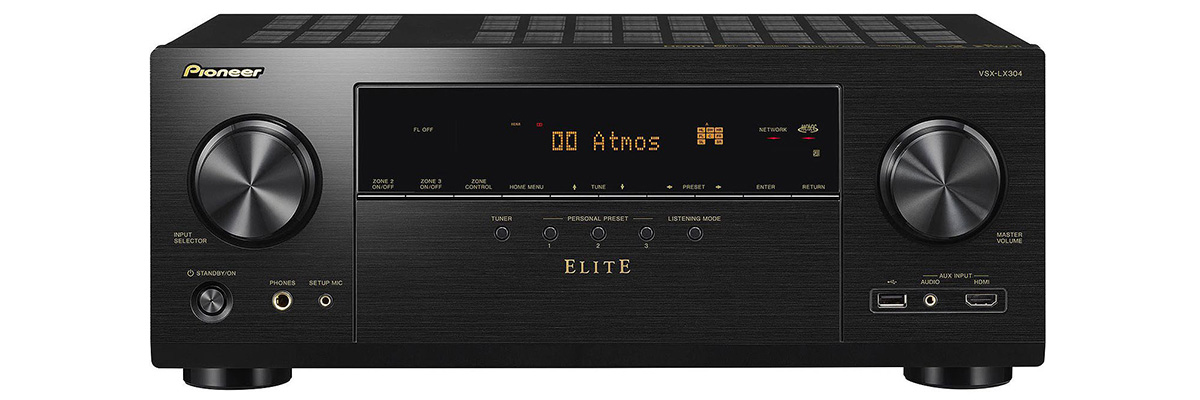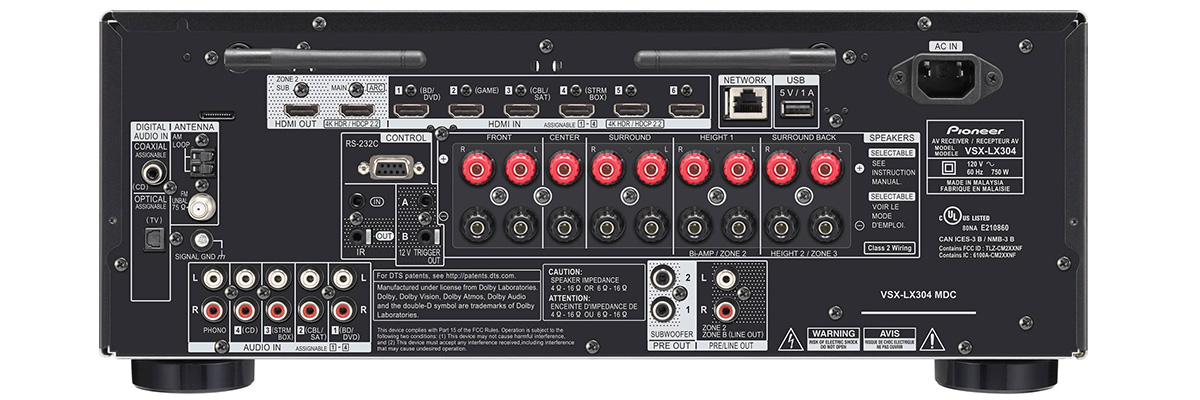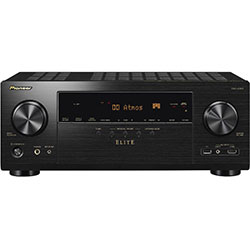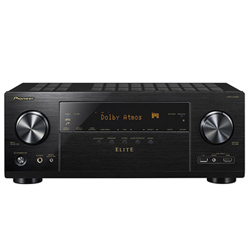 The Japanese company Pioneer presents the VSX-LX304 AV receiver, the main differences from the previous VSX-LX303 model are: they removed component and composite video inputs (they are outdated and no one has been using them for a long time), they reduced the number of optical inputs from 2 to 1, and added new IMAX Enhanced technology. See other Pioneer Elite VSX-LX304 specs in our Pioneer Elite VSX-LX304 review.
The Japanese company Pioneer presents the VSX-LX304 AV receiver, the main differences from the previous VSX-LX303 model are: they removed component and composite video inputs (they are outdated and no one has been using them for a long time), they reduced the number of optical inputs from 2 to 1, and added new IMAX Enhanced technology. See other Pioneer Elite VSX-LX304 specs in our Pioneer Elite VSX-LX304 review.
Pioneer Elite VSX-LX304 review
Features
As for the power of the built-in amplifiers, for the LX304 it is 185 W per channel with a speaker impedance of 6 Ohms. Power can also be redirected to Zone 2 and Zone 3 outputs for scoring adjacent rooms. The outputs of the Zone 2 preamplifier can be reconfigured as Zone B line outputs, which allows you to transfer the signal played in Zone A (main zone) to another location or, for example, to a set of wireless headphones (via a transmitter). Also, this model received the Dialogue Enhancement function, which allows you to configure increased intelligibility of dialogs and vocals.
Design and build
Using a specific version of the DTS: X codec and precise settings modeled on the IMAX theater sound system. And there is also a bi-amp for the front speaker pair. In combination with the tremendous ability to play music from a USB flash drive (up to 384 kHz FLAC and 5.6 MHz DSD) or via a wired / wireless local area network (almost all formats are supported, except the most high-bitrate), as well as a very good built-in digital analog converter Ti BurrBrown PCM 5101 on the front channels (in multi-channel mode, the AKM4458 DAC helps him), we get an unexpectedly decent basis for a stereo system.

Connectivity
There are 6 HDMI2.0 inputs on the rear panel, 1 front input. The receiver understands any video streams up to 4KUHD with support for HDR10. The signal can be output through either of the two HDMI 2.0 outputs, one of which is equipped with an ARC return channel.
Setup
On board of the model there is an advanced multi-channel acoustic calibration system (MCACC). This technology is designed to correct the audio parameters of a room using a special receiver microphone. The MCACC improved the results by measuring background noise, standing wave compensation, and phase matching LFE (low-frequency effects) between the channels.
Pros and Cons
Pros
- For a middle-class cinema, it is suitable without any restrictions
- Volume, sound resolution and even dynamics - all at a decent level
Cons
- No preamp output to all channels and zones
Common features
Product
Model
Brand
Reviews
Amplifier
Channels
Stereo power (RMS), W/Ohm
Output impedance, Ohm
Frequency response
THD in stereo, %
Audio features
Digital to analog converter (DAC)
Bi-amping
Pure direct (straight)
Auto speaker calibration
Speaker A/B switching
Other audio features
Connectivity
Wi-Fi
USB
Bluetooth
Ethernet (RJ45)
DLNA
MHL
Streaming services
Apple Music (AirPlay)
Amazon Music
Spotify
Other streaming services
Extensive connection
HDMI input/output
HDMI ARC (Audio Return Channel)
HDMI eARC (Enhanced Audio Return Channel)
HDMI CEC
Digital content protection (HDCP)
Subwoofer output (LFE)
Headphone output
Optical digital input
Coaxial digital input
Composite input
Component input/output
Phono (MM) input
Front panel connectors
Multi channel preamp output
Video features
HDR (High Dynamic Range)
4K signal pass-through
8K signal pass-through
HDMI signal pass-through
3D signal pass-through
HDMI pass-through in standby mode
Video conversion
Analog to HDMI scaling
HDMI to HDMI scaling
Dolby Vision
Other video features
Additional features
Voice control
App control
Display
Tuner
Sleep timer
Auto power off
ECO mode
Graphical user interface (GUI)
Setup assistant
Firmware update
Other additional features
Multi-room
Multi-room zones
Zone audio output
Zone HDMI output
Multi-room control
RS-232
Remote control input/output (IR)
DC trigger output (12V)
Multichannel surround
Dolby Atmos
Dolby TrueHD
Dolby Surround
Dolby (other)
DTS:X
DTS HD Master
DTS Virtual:X
DTS Neural:X
DTS (other)
Auro-3D
IMAX Enhanced
Multichannel stereo
Audio file formats
MP3
WMA
AAC
WAV
FLAC
ALAC
Other audio file formats
Power
Operational power consumption, W
Standby consumption, W
Removable power cord
User manual
Manual
Dimensions
Size W x H x D, cm/inches
Weight, kg/lbs
Other
Release year



